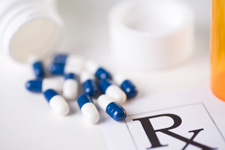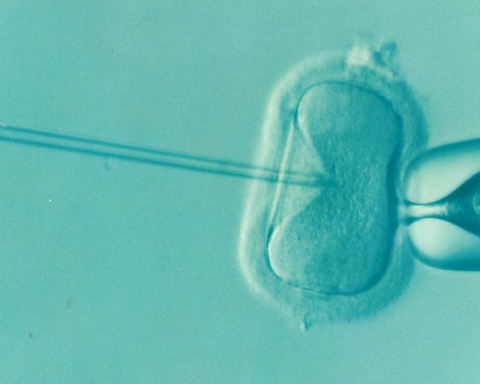Learning outcomes
Level Mb case study: You will be able to:
- interpret clinical signs and symptoms
- evaluate laboratory data
- critically appraise treatment options
- state goals of therapy
- describe a pharmaceutical care plan to include advice to a clinician
- describe the prognosis and long-term complications
- describe the social pharmacy issues which could include supply (e.g. complex treatments at home, concordance and compliance) and lifestyle issues
- describe the monitoring of therapy.
Scenario
Mr FG is a 69-year-old retired school teacher who was admitted to the emergency department complaining of severe chest pain after climbing stairs at his daughter’s house. In the ambulance he is administered aspirin 300 mg. On arrival at hospital and subsequent examination and review by the admitting doctor the following information is obtained.
Previous medical history
Hypertension (10 years). Type 2 diabetes mellitus (recently diagnosed, currently diet controlled). The patient is a regular cigarette smoker (>40 per day) and drinks approximately 10 units of alcohol per week. He has osteoarthritis of the knee.
Family history
Father died following a myocardial infarction at 60 years of age. No maternal history of cardiovascular disease.
Drug history
Allergies: Trimethoprim. Mr FG has been taking diclofenac MR tablets 75 mg (twice daily) and nifedipine (Adalat Retard) MR tablets 20 mg (twice daily). Both were stopped on admission.
Signs and symptoms on examination
- Temperature 36.4°C
- Blood pressure 160/80 mmHg
- Heart rate 75 bpm, regular
- Respiratory rate 15 breaths per minute
- No basal crackles in the lungs.
An ECG taken immediately on arrival reveals ST elevation of 3 mm in the inferior leads.
Diagnosis
A preliminary diagnosis of myocardial infarction is made.
Relevant test results
Full blood counts, liver function tests, electrolytes and renal function, CXR, total cholesterol, full blood count and blood glucose were taken at admission.
Questions
1 What further diagnostic and biochemical tests should be ordered to help confirm the diagnosis?
2 What is myocardial infarction and what are the classic symptoms?
Initial treatment
About 45 minutes after the onset of chest pain the patient received the following treatment in the emergency department:
- heparin 5000 units stat
- reteplase 10 units i.v. bolus followed by a further 10 unit i.v. bolus after 30 minutes
- diamorphine 2.5 mg IV stat
- metoclopramide 10 mg stat.
A sliding scale insulin infusion of Actrapid 50 units made up to 50 mL with sodium chloride 0.9% was initiated and titrated against blood glucose.
3 Explain the mechanism of action of thrombolytics such as reteplase in acute myocardial infarction.
The patient is subsequently transferred 2 hours later to the coronary care unit as he is pain-free. As the ward clinical pharmacist, you are responsible for daily review of drug charts and advice to medical and nursing staff on all aspects of drug treatment for patients on the ward. The following tests taken at admission are reported:
| Na+ | 134 mmol/L (135–145 mmol/L) |
| K+ | 4.3 mmol/L (3.5–4.0 mmol/L) |
| Urea | 5.2 mmol/L (0–7.5 mmol/L) |
| Creatinine | 81 micromol/L (35–125 micromol/L) |
| Total cholesterol | 5.9 mmol/L (<4 mmol/L) |
| Blood glucose | 4.4 mmol/L (4–10 mmol/L) |
4 Following the initial dose of heparin (5000 units stat), what dose of heparin should be administered by i.v. infusion and for how long?
5 What classes of drugs should be initiated as standard secondary prevention treatment following acute myocardial infarction in this patient?
6 For each of the classes of drug to be initiated as secondary prevention state (a) a suitable drug choice and (b) a starting dose. Indicate what clinical trial evidence and national guidelines support the use of the drugs that you have mentioned.
7 As this patient has type 2 diabetes mellitus: (a) Which drug/drug class mentioned above as standard secondary prevention may cause problems in this patient? (b) What problems may be experienced in the use of this drug/drug class in a patient with type 2 diabetes mellitus? (c) What alternative drug could you recommend?
8a If this patient is initiated on a statin as cholesterol-lowering treatment, when should the total cholesterol next be checked following drug initiation?
8b What counselling should the patient receive regarding the side-effects of statins?
9 Mr FG experiences a chest infection 4 days post admission and is prescribed amoxicillin 500 mg three times daily and erythromycin 500 mg four times daily. What problems may this cause with this patient’s statin therapy and what advice would you give in order to avoid this problem occurring?
Answers
1 What further diagnostic and biochemical tests should be ordered to help confirm the diagnosis?
Troponin
Troponin enzymes consist of troponin T, C and I which are located within cardiac and skeletal muscle. Cardiac isoforms of troponin T and I are exclusively expressed in cardiac myocytes. They act as sensitive and specific markers of cardiac damage. An initial rise in troponin may be seen as early as 3–4 hours after a cardiac event, and is usually measured on admission to hospital. However, a rise in troponin may be delayed therefore the initial measurement taken on admission is repeated by a further blood sample 12 hours after the onset of chest pain.
The troponin assay has prognostic information that can determine mortality risk in acute coronary syndrome and define which patients may benefit from aggressive medical therapy and early coronary revascularisation.
Creatine kinase
Creatine kinase (CK) occurs in high concentrations in the brain, cardiac and skeletal muscle and is elevated in the blood with muscle damage. A rise in CK is seen in acute myocardial infarction but also in other conditions. A more specific marker is creatine kinase MB (CK-MB), which is an isoenzyme of creatine kinase that is more specific for cardiac muscle damage. CK or CK-MB will rise approximately 4 hours after an acute cardiac event and will reach a peak after approximately 24 hours and will remain raised for 3–4 days.
CK-MB was until recently the standard marker for myocyte damage used in acute coronary syndrome, but the presence of low levels of CK-MB in the serum of normal individuals and in patients with significant skeletal muscle damage has limited its accuracy.
2 What is myocardial infarction and what are the classic symptoms?
Myocardial infarction (also known as a heart attack) occurs when the blood supply to a part of the heart is interrupted. This is most commonly due to occlusion (blockage) of a coronary artery following the rupture of an atherosclerotic plaque in the wall of the artery. The resulting ischemia and oxygen shortage if left untreated can cause damage and/or death (infarction) of the heart muscle (myocardium).
Severe cardiac pain, chest tightness, sweating, breathlessness and nausea. Some patients may present with atypical features including indigestion, pleuritic chest pain or dyspnoea.
3 Explain the mechanism of action of thrombolytics such as reteplase in acute myocardial infarction.
Fibrinolytic agents such as reteplase enhance the breakdown of occlusive thromboses by the activation of plasminogen to form plasmin.
4 Following the initial dose of heparin (5000 units stat), what dose of heparin should be administered by i.v. infusion and for how long?
Intravenous infusion of heparin 1000 units per hour starting after the second reteplase bolus. Heparin should be administered for at least 24 hours, preferably for 48–72 hours, aiming to keep activated partial thromboplastin time (aPTT) values 1.5–2 times normal.
5 What classes of drugs should be initiated as standard secondary prevention treatment following acute myocardial infarction in this patient?
i. Beta-blockers
ii. Statins
iii. ACE inhibitors
iv. Antiplatelet therapy with aspirin.
v. Cardiovascular case studies
6 For each of the classes of drug to be initiated as secondary prevention state (a) a suitable drug choice and (b) a starting dose. Indicate what clinical trial evidence and national guidelines support the use of the drugs that you have mentioned.
Statins – drug choice: simvastatin
Simvastatin 20–40 mg daily (given at night) would be a suitable starting dose. This has been shown in large, well-conducted clinical trials to reduce clinically relevant events such as heart attacks and strokes. The NICE technology appraisal on statins states that there is no evidence that any one statin is superior to another in reducing cardiovascular events. However, only atorvastatin, fluvastatin, pravastatin and simvastatin (and not rosuvastatin) have trials reporting clinical events as outcomes. There are substantial differences in prices between the different statins. Therefore, therapy should usually be initiated with a drug with a low acquisition cost (taking into account required daily dose and product price per dose).
Based on clinical trial evidence and cost, generic simvastatin 20 mg or 40 mg daily would seem a reasonable first-line choice. In the largest statin trial to date, the Heart Protection Study (2002), which included people with and without existing coronary heart disease (CHD), simvastatin 40 mg was associated with a significant 27% reduction in major coronary events (CHD death plus non-fatal myocardial infarction), equating to an NNT (number needed to treat) of 32 over 5 years.
Based on clinical trial evidence, atorvastatin 10 mg daily would be a reasonable alternative to simvastatin. However, branded atorvastatin 10 mg is over four times more expensive than generic simvastatin 40 mg.
See MeReC Briefing No. 28 (National Prescribing Centre, 2005) for further details of the evidence base relating to statins and also the Cholesterol Treatment Trialists’ (CTT) Collaborators (2005) meta-analysis.
Beta-blockers – drug choice: atenolol, bisoprolol or metoprolol
There is strong evidence that beta-blockers can reduce mortality by up to 23% post myocardial infarction. Beta-blockers should be used to reduce the risk of further cardiovascular disease events irrespective of whether the blood pressure is raised or not. There is no evidence that any beta-blocker is more effective than another in secondary prevention, hence a beta-blocker which is well tolerated and that can be taken once or twice daily should be used. Atenolol, bisoprolol or metoprolol are suitable agents. These agents are not specifically licensed post myocardial infarction but all are licensed for angina and the doses for this indication should be used i.e.
i. atenolol – up to 100 mg daily in one or two divided doses
ii. bisoprolol – usually 10 mg daily up to a maximum of 20 mg daily (note it is usual to start at lower doses e.g. 2.5–5 mg and increase time)
iii. metoprolol – 50–100 mg two to three times daily.
ACE inhibitors: drug choice:
ACE inhibitors reduce morbidity and mortality post myocardial infarction in patients with left ventricular systolic dysfunction (LVSD). This is thought to be mediated via their action on the renin–angiotensin system. More recent evidence from the HOPE study (2000) has established that ACE inhibitors given to high risk CVD patients who had not got low ejection fraction or heart failure resulted in benefits in terms of reduced morbidity and mortality.
The NICE clinical guidelines on secondary prevention of myocardial infarction (2007) now recommend that ACE inhibitors should be used in all patients post myocardial infarction with or without LVSD (i.e. ejection fraction <40%).
Within the HOPE study ramipril was the agent of choice and this would be an appropriate ACE inhibitor to use post-myocardial infarction. Ramipril is licensed for use post myocardial infarction at a dose of 2.5 mg twice daily initially (started in hospital 3–10 days after infarction), increased after 2 days to 5 mg twice daily. Maintenance doses are 2.5 mg–5 mg twice daily.
Antiplatelet therapy – drug choice: aspirin
Aspirin 75 mg daily for life is recommended for people with existing cardiovascular disease (secondary prevention). Doses of aspirin from 75 mg to 325 mg daily have been proven to be effective, therefore the lowest effective dose that minimizes side-effects (i.e. 75 mg daily) should be used.
7 As this patient has type 2 diabetes mellitus: (a) Which drug/drug class mentioned above as standard secondary prevention may cause problems in this patient? (b) What problems may be experienced in the use of this drug/drug class in a patient with type 2 diabetes mellitus? (c) What alternative drug could you recommend?
Beta-blockers may be a problem in this patient because they can mask the usual signs of hypoglycemia. But the benefit is considered to outweigh the risks in the majority of patients who should be counseled regarding this effect. An alternative would be a rate-limiting calcium channel blocker such as diltiazem although clinical trial evidence as regards its benefit post myocardial infarction is lacking.
8a If this patient is initiated on a statin as cholesterol-lowering treatment when should the total cholesterol next be checked following drug initiation?
After 6–12 weeks. Minimum interval of at least 4 weeks.
8b What counseling should the patient receive regarding the side-effects of statins?
Simvastatin, like other inhibitors of HMG-CoA reductase, occasionally causes myopathy manifested as muscle pain, tenderness or weakness with creatine kinase (CK) 10 times above the upper limit of normal (ULN). Myopathy sometimes takes the form of rhabdomyolysis with or without acute renal failure secondary to myoglobinuria, and very rare fatalities have occurred.
The Committee on Safety of Medicines (CSM) has advised that rhabdomyolysis with lipid-regulating drugs is rare (1 case in every 100 000 treatment years) but may be increased in those with renal impairment and/or hypothyroidism. Concomitant prescribing of drugs that increase the plasma statin concentration (e.g. fibrates) will increase the risk of muscle toxicity.
All patients starting therapy with a statin, or whose dose of statin is being increased, should be advised of the risk of myopathy and told to report promptly any unexplained muscle pain, tenderness or weakness.
9 Mr FG experiences a chest infection 4 days post admission and is prescribed amoxicillin 500 mg three times daily and erythromycin 500 mg four times daily. What problems may this cause with this patient’s statin therapy and what advice would you give in order to avoid this problem occurring?
Erythromycin may cause increases in the serum levels of simvastatin. The CSM has advised that this should not be co-prescribed with simvastatin. In the first instance, the pharmacist should check local policies for management of hospital-acquired chest infections/pneumonia to ascertain first and second line choices. If erythromycin or any macrolide cannot be avoided then a practical way forward may be to avoid taking any dose of simvastatin for the duration of the course of macrolide. In addition a recent Drug Safety Update from the Medicines and Healthcare Products Regulatory Agency (MHRA, 2008) on statins has highlighted statin drug interactions and the appropriate actions to take.
General references
- Cholesterol Treatment Trialists’ (CTT) Collaborators (2005) Efficacy and safety of cholesterol-lowering treatment: prospective meta-analysis of data from 90 056 participants in 14 randomised trials of statins. Lancet 366: 1267–1278.
- HOPE (Heart Outcomes Prevention Evaluation Study Investigators) (2000) Effect of an angiotensin converting enzyme inhibitor, ramipril, on cardiovascular events in high risk patients. New England Journal of Medicine 342: 145–152.
- Heart Protection Study Collaborative Group (2002) MRC/BHF Heart Protection Study of cholesterol lowering with simvastatin in 20,536 high-risk individuals: a randomised placebo-controlled trial. Lancet 360: 7–22.
- MHRA (Medicines and Healthcare Products Regulatory Agency) (2008) Drug Safety Update, Volume 1, Issue 6, January. Available at http://www.mhra.gov.uk/Public ations/ Safetyguidance/DrugSafetyUpdate/CON2033505 [Accessed 10 April 2008].
- National Prescribing Centre (2005) Update on statins. MeRec Briefing Issue No. 28. February. Available at http://www.npc.co.uk/MeReC_Briefings/2004/briefing_no_28.pdf [Accessed 3 July 2008].
Author: Narinder Bhalla; BSc (Hons), MSc, MRPharmS. Pharmacist,Cambridge University Hospital.







